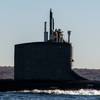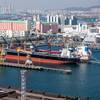Many ship lines, including privately and government-owned ferry systems, have become members of Green Marine. The goal of this organization is to help these carriers reduce their environmental footprint, with an emphasis on 12 key performance indicators.
These key performance indicators include taking steps to reduce fuel emissions, which contribute to greenhouse gases; lowering energy consumption, both onboard and at land office locations; developing an array of recycling programs, including recycling for beverage containers, cardboard, newsprint, wood, metals, etc.; taking significant steps to reduce water consumption—onboard vessels and at terminals. Reducing water consumption is pivotal because it can result in many benefits, which further contribute to reducing a ship or ferry’s environmental impact. Among these benefits are the following:
- The size of both the fresh and waste “black” water tanks can be reduced, providing more space for other uses on the vessel.
- If less water is used or stored onboard, the vessel can be put into service for longer periods, traveling greater distances.
- Less fresh water and wastewater onboard reduces the weight of the vessel; a lighter craft means less fuel is needed.
- When less fuel is required, emissions are reduced—one of our central green goals—and fuel costs likely will decrease.
“Fortunately, there is a variety of ways that ships, large and small, can reduce water consumption,” says Klaus Reichardt, CEO of Waterless Co., manufacturer of no-water urinal systems. “And, if this is accomplished over the long-term, it is referred to as using water ‘more efficiently.’ This means less water is used and less water is wasted on a permanent, not a temporary, basis.”
According to one of the oldest and largest ferry operators in North America, the organization has managed to become more water efficient in the following ways:
- Installed low-flow toilets; typically these toilets use about 1.25 gallons of water per flush (gpf), instead of the 1.6 gpf with traditional toilets.
- Replaced water-using urinals with waterless urinals.
- Swapped out flush valves on current bathroom fixtures (where possible and appropriate) so instead of using three gpf, they are now releasing only 1.5.
- Started a pilot program to collect rainwater for irrigating vegetation onboard the ferry.
Dollars and Cents
Before looking at some of the ways ships and ferries can reduce water consumption, let’s investigate some dollar and cents reasons for doing this. One of the most important, if not the most significant, cost savings possible as a result of reducing water consumption onboard is when it comes to disposing of wastewater, especially if the vessel travels to foreign ports.
According to the Environmental Protection Agency (EPA), “An average cruise ship with 3,000 passengers and crew produces about 21,000 gallons of sewage per day — enough to fill 10 backyard swimming pools in a week.”
That’s a huge volume of water. And, while there are no such “average” figures for smaller vessels, such as ferries, mainly because the size and capacities of these crafts vary so much, we can assume the numbers are also high.
For instance, the ferries used in Washington State have an average passenger capacity of about 1,500 people. This capacity results in thousands of gallons of sewage each day as well.
“When it comes to dollars and cents, the significant cost factor is disposing of this wastewater,” Reichardt says. “If a U.S. vessel, for instance, travels to a foreign port, removing the wastewater is often treated as a tax by the foreign government, and these ‘taxes’ can be exorbitant.”
As a result, the more water efficient the vessel is, the less wastewater it will carry, and the lower these charges will likely be.
Ways to Reduce Water Consumption
Water conservation steps, such as those implemented by the ferry system operator mentioned earlier, can help significantly. But, Reichardt says other steps should be taken, such as the following:
- Conduct a water audit: “Often performed in commercial buildings, the goal of a water audit is to determine exactly where water is being used, where it is wasted, such as with leaks, or where it can be reduced. A water audit should be conducted every two years,” advises Reichardt.
- Install pressurized or vacuum-assisted flush toilets: These toilets use additional air pressure to remove waste. This reduces water consumption considerably.
- Install aerators: “One of the least costly and most effective water efficiency steps to take, aerators should be installed in every faucet and shower,” he explains.
- Upgrade water-using kitchen appliances: For instance, dishwashers should be replaced with ENERGY STAR-certified systems that use far less water than older, more traditional dishwashers. Ice machines should be replaced with air-cooled systems, which consume about 50 gallons of water per 100 pounds of ice produced—far less than a traditional ice machine.
Finally, Reichardt also encourages ship and ferry operators to consider installing water submeters, even on ferries. “Having more than one water meter onboard tells crew members exactly where water is used so they can concentrate their water efficiency efforts in those areas. Also, if water use spikes, submeters will indicate where this is happening, so steps can be taken quickly to reduce consumption,” he concludes.













